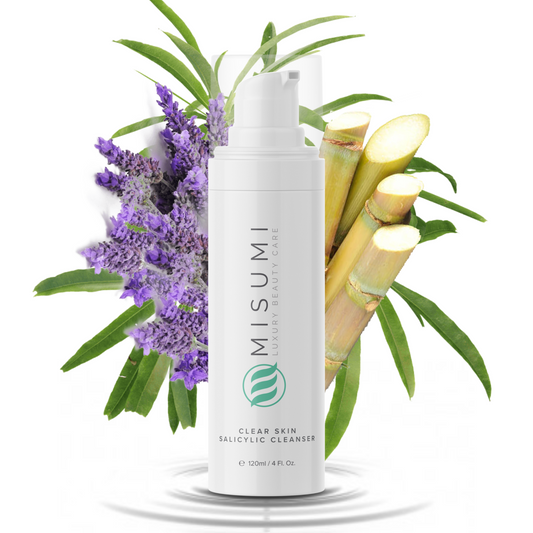Want to get clear, healthy-looking skin? We've gathered the best natural remedies to help you get rid of acne, acne scars, stretch marks, wrinkles, discoloration, rashes, redness, and dryness to make your skin glow.
So if you want to know the best ingredients and remedies for clear skin, check out our ultimate guide below.
Natural Remedies for Glowing Skin
Turmeric

Want clear skin? Make yourself a face mask using turmeric. This ingredient will do wonders for healthy and shiny skin and can work miracles on your acne, too!
You’ll need:
-
1 tbsp of fresh aloe vera gel
-
1 tbsp of honey
-
1 tbsp of minced turmeric.
First, stir the mixture to get a thick paste. Then, apply it to your face and neck and let it work for half an hour. Once you’re done, wash it off with warm water. Use face cream or coconut oil afterward for the final touch.
Papaya
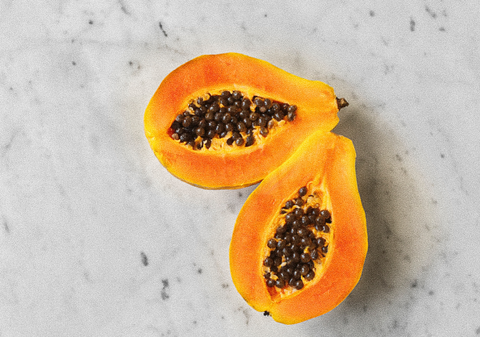
Papaya is one amazing superfruit that can fix a range of skin imperfections. Best of all, homemade face masks with papaya are actually suitable for the whole body.
This fruit contains vitamins A, B, C, and E, potassium, and magnesium. This fruit is effective against the premature aging of the skin, giving you smoothness, shine, and strength. Papaya is also incredibly rich in antioxidants that help with inflammation. This combination of papaya, coconut, and honey is an explosion of moisture for flawless skin.
You’ll need:
-
1 piece of papaya
-
1 tablespoon of coconut oil
-
Half a banana
-
1 tablespoon of honey
-
1 pineapple
Blend the above ingredients in a food processor until you get a smooth paste, and apply on clean skin. Wait for 15-20 minutes to give the mask chance to act, then rinse. Your skin will be reborn softer and more glowy than ever!
Cucumber

Cucumbers are excellent for the skin because they contain a high water content and fibers that help remove toxins. They also have a lot of vitamin C, which helps moisturize the skin, giving you that shiny, glowy look.
So instead of eating them, you can use these benefits topically by making a facial cucumber mask. This mask is refreshing and hydrating and will improve your skin texture.
You’ll need:
-
A cucumber
-
Plain yogurt
Rinse and slice the cucumber before adding it to your blender. Add plain yogurt and blend until you get a creamy paste. Apply this delicious cream on a clean face, neck, and neckline, and let it work its magic for half an hour. Make sure to wash it off with room-temperature water. Repeat the procedure 2-3 times a week.
Green Tea

Green tea is not just for drinking - you can also use it in your skincare regimen!
You’ll need:
-
4 bags of herbal teas
-
A handful of flaxseeds
First, open up three tea bags and pour the tea leaves into a bowl. Then, add your flax seeds. Boil another bag of green tea, then let it cool down. Take a thick cotton pad, soak it in the green tea, and apply a thin layer to your face. Put the mixture of tea and flaxseed on top, cover it with another cotton pad, and let it stand for 30 minutes. Rinse your face with cold water.
Do this a few times a week, and you’ll soon experience softer, cleaner, and clearer skin.
Figs

Figs are a wonderful choice for topical application because they can make an amazing and nourishing antioxidant-rich face mask that can soothe a range of skin issues.
You’ll need:
-
2-3 mashed figs
-
1 tablespoon of olive oil
Mix the figs and olive oil and then apply the mixture to the face. Feel it work wonders on your skin. Make sure to leave the mask on for 10 to 15 minutes before rinsing off with warm water.
You can repeat the procedure up to 3 times a week to achieve glowing skin.
Home Remedies for Dry Skin
Rose Water
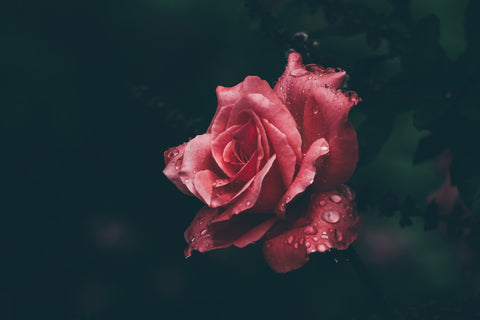
If you have dry skin, rose water is an amazing remedy. This little ingredient has numerous benefits, such as skin softening and giving your complexion a natural, healthy glow. It helps clear up your skin by getting deep into your pores, keeping them hydrated.
But what if you have sensitive skin? Well, don't worry! Rose water is mild, and the best thing is it has no side effects. It's believed that even Cleopatra used rose water in her skin regime.
Here's one recipe you can use for moisturizing skin.
You'll need:
-
1 tbsp of coconut oil
-
3 tbsp of rose water
-
1 tbsp glycerin
Mix all the ingredients in a small bottle and shake. After 2 or 3 minutes, apply the mixture to your skin.
You can do this two times a day. The glycerin and the coconut provide hydration, and the rose water gives you a fresh feeling. If you have dry patches, this recipe will revive your skin in no time.
Castor Oil

Castor oil (also known as Ricinus cimmunis) is a vegetable oil that comes from squeezing castor seeds. This natural ingredient helps you keep dry skin at bay. It contains ricinoleic acid, which gives castor oil many health benefits.
For example, you can use it for inflamed skin, sunburns, acne breakouts, or even scars. The oil goes deep into the scar tissue and encourages the growth of healthy cells. For the trick to work, you need to use it regularly.
You can also find castor oil in cosmetic products for skin hydration. But because some moisturizing products contain inflammatory ingredients like preservatives, perfumes, and dyes, castor oil by itself or mixed with coconut oil can be an excellent moisturizing product for anyone with a dry skin type.
Here's a homemade mixture you can use.
You’ll need:
-
1 tbsp of castor oil
-
2 tbsp of coconut oil
Mix the oils and dip a cotton pad in the mixture. Place the pad to the inflamed area to act for 15 minutes. After that, wash your face with room-temperature water.
Lavender Oil
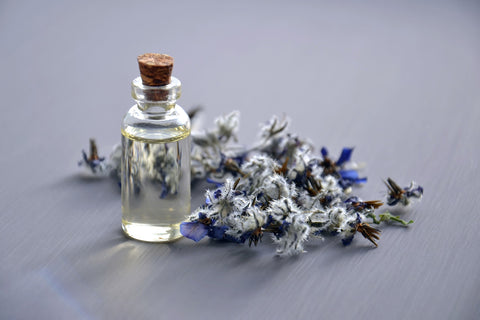
Lavender oil is always a favorite among essential oils - maybe because of its anti-inflammatory benefits and therapeutic effect for dry skin types. But it also helps fight acne, eczema, injured skin, wrinkles, and more.
Best of all, it helps treat migraine, headaches, stress, and tension.
If your pores are clogged, the oil can kill the bacteria, moisturizing your skin and reducing the chances of developing a pimple. In addition, because it reduces inflammation, you can use lavender oil as a primer or a base product for smooth coverage.
Lavender helps balance the skin's moisture barrier so it doesn't get too oily or dry. In days of cold winds or too much sun, you'll want to keep this oil in your pocket.
You can use lavender oil to reduce anxiety and moisturize your skin at the same time. Make yourself a hot bath, spray a little lavender oil when the bathroom starts to get steamy, take deep breaths, and relax. After your bath, use a few drops of lavender oil mixed with coconut oil for the perfect DIY massage oil. Massage your skin softly to get it clean and glowy. Enjoy!
Almond Oil
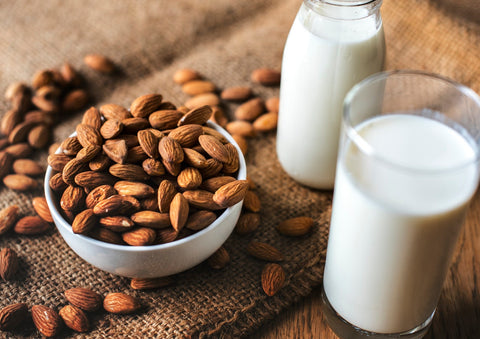
Almonds are very powerful, not only because they are a healthy snack and make tasty milk, but because their oil can do wonders for your skin.
There are many benefits to using almond oil for your skin. It's rich in vitamin E, vitamin A, potassium, zinc and fatty acids, and protein. Because of its vitamin E content, almond oil is great for cleaning your skin of dead skin cells, making it soft, smooth, and wrinkle-free.
The fatty acids moisturize the skin, keep the sebum under control, and heal irritated skin. So if you're struggling with dryness, don't despair - almond oil will always come to the rescue.
And because of its antibacterial effects, it also makes for the perfect, natural makeup remover. You should definitely add this one to your skincare routine.
Tamanu Oil
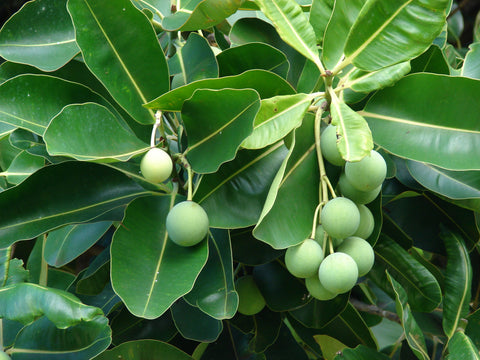
Tamanu oil has a moisturizing effect on the skin. Combine 2 tbsp of tamanu oil with 1/4 cup of avocado. Store it in a small bottle and apply a few drops all over your dry or inflamed skin before going in the shower.
You could also mix 2 tbsp with 1/4 cup of jojoba oil and use it similarly. For the best results, use tamanu oil every time before showering. After a couple of weeks, you'll start to notice the benefits.
Home Remedies for Oily Skin
Fuller’s Earth
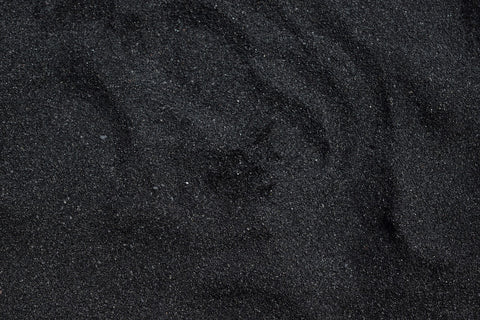
Clay masks like Fuller's Earth, also known as Multani mitti, is a natural solution for all your skin's problems. In fact, it might be able to solve your oily skin once and for all. It's rich in minerals, such as aluminum silicate, which easily absorbs into the skin, leaving it fresh and radiant - the very reason why it's highly recommended for oily and acne-prone skin. It will also kill harmful bacteria and remove excess oil and dirt.
The best way to say goodbye to your oily skin is with this super-powerful Fuller's Earth and rose water mask. All you need is one small cup Multani mitti and two tbsp of rose water. Mix the ingredients until you get a paste-like consistency. Apply it evenly on the face and leave it on for 15 minutes. Wash it off with water.
Mango Pulp

Rich in nutrients and boasting antifungal, anti-bacterial, and anti-inflammatory properties, mangos can be an extremely effective tool against excessive oil, helping you achieve clear and spotless skin.
Simply mash one mango until you get a paste-like consistency and apply evenly on the skin. To highlight the mango's exfoliating properties, add one to two tbsp of brown sugar and mix well. Apply on the skin and massage in a circular motion for a couple of minutes. Wash off with room temperature water.
Blotting Papers

Did you know blotting papers can help you get rid of oily skin? They're amazing for absorbing any extra oil your sebaceous glands produce. To banish unwanted shine and grease, use these blotting papers three to four a day.
Cosmetic Clay
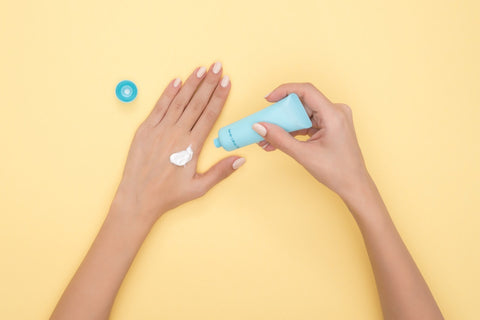
There are many different clays in cosmetics these days, but we can all classify them into three categories - Smectite (montmorillonite), Illite, and Kaolinite. It's good to know what type of clay you're buying since they all have different characteristics and produce different results.
For oily skin specifically, choose a smectite clay. They're famous for their ability to absorb impurities and oils. Some of the most typically used cosmetic clays from the smectite group are bentonite clay, red (Montmorillonite) clay, French green, and rhassoul clay.
Cure Acne Naturally
Zinc
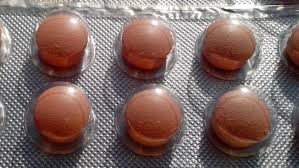
Zinc is one of the essential nutrients that our body needs to function normally. It protects the immune system by fighting off harmful bacteria and viruses. In addition, it has anti-inflammatory properties, which can reduce redness and irritation.
Throughout the years, research has established the role of zinc in treating many disorders and conditions, including acne. That's right - you can take zinc orally or topically as an acne treatment.
Topical application is considered less effective, but it comes without side effects, while taking an oral supplement might cause nausea in some people. We recommend taking an oral zinc supplement if you're dealing with severe acne. You can use zinc topically for mild acne, blackheads, whiteheads, papules, and pustules. It can take up to three months to see results, so be patient.
Echinacea

Echinacea is considered a perennial plant that acts as an immune stimulant. People have used echinacea as a herbal medicine for years - against colds and other respiratory conditions, as well as infections. But now, new evidence is piling up - it's also a good weapon against acne. In one 2011 study, echinacea was shown to completely reverse bacterial-induced inflammation.
The best part about this plant is you can grow it in your backyard. Hey, maybe you even already have it? In that case, all you need to do is harvest the roots, wash them off, and leave them in the sunlight to dry. Once dry, crush them to make a powder and store it in a glass jar. This way, you'll have a powerful acne remedy whenever you need one.
Alternatively, make a face mask and use it topically. You'll need one tbsp of honey, one tbsp of echinacea powder, and zest from one orange. Heat the honey and add the other ingredients. Blend well and then store it at room temperature. With slightly moist hands, scoop about 1 tsp worth of mask and apply on the face. Let it sit for 20 minutes before rinsing off.
You could also boil one gram of the powder with approximately 200 ml of water, filter the liquid, and drink it on a daily basis.
Witch Hazel
Witch hazel has high levels of tannin, an acid that has a lot of health and skin benefits but doesn't cause skin irritation. It's often used to treat acne because of its antibacterial effects and ability to reduce inflammation. You can use witch hazel directly on the skin or make a homemade facial mask by combining it with egg whites and lemon.
Blend one tbsp of witch hazel with one egg white and the juice from one freshly squeezed lemon. Blend well and apply the mask evenly on the face. Wait for it to dry off, then wash your face with cool water. You'll get glowing skin in no time.
Aspirin

Aspirin is an anti-inflammatory agent, which means it can reduce redness. It also contains salicylic acid, the most frequent ingredient in acne products known for cleaning out pores and exfoliating the skin. When combined with honey, it can reduce breakouts and help the skin heal faster.
Take 5 to 6 aspiring pills, crush them, and place them in a mug with a little water. Wait for the aspiring to dissolve. Mix it well until you get a paste-like consistency. Then, add one tbsp of honey, and continue to mix.
Don't like honey? That's fine! You can use olive oil or jojoba oil, especially if your skin is too dry. Apply it to your skin and wait for 20 minutes to act. After that, wash off and reveal the glowing skin below.
Tea Tree Oil

Tea tree is antimicrobial and anti-inflammatory essential oil, meaning it can be used directly on affected areas. The oil can reduce the redness, swelling, and inflammation, eliminate acne-causing bacteria and dry up the already-developed acne. Because the oil is strong, dilute it with water before applying it to your face - unless you have a severe acne condition.
For severe acne, use this essential oil undiluted. Pour a few drops onto a cotton ball and dab on the acne-affected skin. Don't use it on the whole face. For even more effective results, leave it overnight and wash it off in the morning.
For mild to moderate acne, use diluted tea tree oil. Pour one tbsp of distilled water into a small bowl and add a few drops of the tea tree oil. Dip a cotton ball in the solution and apply it to the affected areas on the skin. You can leave it for about 20-30 minutes before washing it off with cool water.
Jojoba Oil

One of the reasons why jojoba oil is frequently recommended in acne treatments is its ability to mimic natural skin oils - otherwise known as sebum. Regularly applying it on the skin can trick oil-secreting glands into producing less sebum.
Sebum is really important for overall skin health and skin moisture, but it's also known to clog pores and make the skin prone to acne. Jojoba oil absorbs much easier into the skin, providing moisture without causing clogged pores. This makes it great for an oily or combination skin type.
There is a lot of research supporting the effects of jojoba oil. You can use it daily and directly on the skin. First, clean your face and hands. Then, pour a few drops of the oil on your fingertips and gently massage your face. Leave it overnight and wash it off in the morning for glowing, healthy skin.
Rosemary
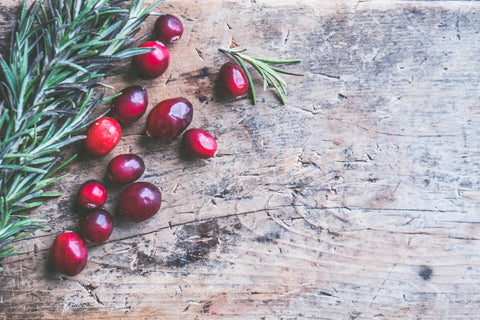
This herb is amazing for revitalizing the skin. Although you may know it as a flavor-adding ingredient used with food, rosemary is famous for reducing excess oil, soothing redness, and calming puffiness.
You can use it directly on the skin. Take a cotton ball and pour a few drops of the oil on it. Gently massage it onto the face for 10 minutes, then rinse it off with lukewarm water.
Another way you can use it is by combining a handful of rosemary needles with one tbsp of raw honey and half a tbsp of coconut oil. Place the ingredients in a food processor and blend until you get a smooth paste. Apply evenly on the face for 10 minutes, and then wash it off.
Sea Salts

Too much salt can dry out the face, but with careful use, this method can save your skin from annoying, recurring pimples.
First, wash your face with a cleanser or face wash to get rid of dirt and dead skin cells, and pat it dry. After that, dissolve sea salt in hot water. The right combination is one tbsp of sea salt with three teaspoons of water. Stir until the salt is entirely dissolved.
Don't use table salt - make sure you have sea salt. When it comes to the liquid, you can either add aloe vera, honey, or green tea. Mix again, and apply evenly on the face. Let the mask sit for ten minutes before rinsing off with lukewarm water. Be careful not to leave the mask on for more than ten minutes, as the salt can make it dry. Finish off with your favorite moisturizer to keep your skin hydrated.
Bentonite Clay

Some of the many benefits of bentonite clay include unclogging and shrinking pores, controlling sebum production, drawing toxins out of the skin, and making it softer. All these benefits contribute to fewer breakouts.
Mix 2 tbsp of bentonite clay, 4 tbsp of chamomile tea, 1 tbsp of honey, and 5 drops of tea tree oil. Stir well until you get a smooth blend. Apply the paste to a clean face and leave it to dry for a few hours. Wash it off with lukewarm water and reveal the flawless skin below.
Remedies For Acne Scars
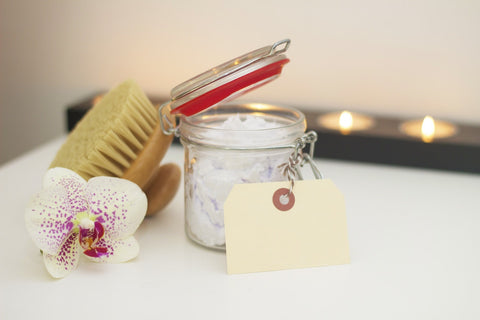
It's not enough that acne can be very difficult to handle and a huge frustration - we can also be left with acne scars.
The best way to treat them is with natural homemade remedies that won't cause more irritation to your skin. So, before using products that are overflowing with toxins and chemicals, try some of these remedies.
Mint
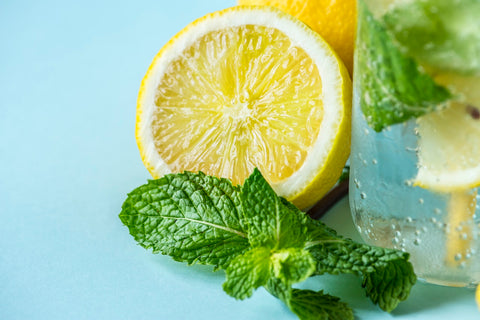
Mint is a powerful natural remedy against acne scars. First of all, it has salicylic acid, which is a well-known acne-treating agent. Secondly, it contains flavonoids and phenolics, which have the power to destroy free radicals. Finally, a couple of studies show that mint's antioxidant properties are effective for treating acne scars.
Here are a couple of homemade mint mask recipes to help you eliminate acne and acne scars.
Gather fresh mint leaves, and clean them properly. Afterward, grind the mint leaves and add a little bit of water to get a paste-like consistency. Apply the paste on the affected areas, and let it dry off before washing away with lukewarm water.
For more effective results, add one tbsp of honey to the paste. Blend well and apply on the face. Let it act for 30 minutes, and then wash it off with room temperature water.
Another variation is to mix mint leaves with freshly squeezed lemon juice. Again, grind and blend until you get the right consistency, and then apply on the face. After 15 minutes, wash off your face.
You don't have to use the same mask every day - mix it up. But, for best results, use at least one mint mask daily. Your new, healthy skin will thank you.
Apple Cider Vinegar

Apple cider vinegar is known to increase blood flow, which speeds up the healing process. This means it can help remove your acne scars. Mix 2/3 of apple cider vinegar with 1/3 water and apply it on your face using cotton. Repeat this every day for a few weeks to get the best results.
Egg Whites
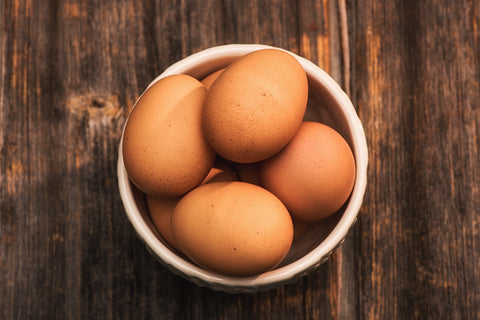
Take an egg and separate the yolk from the egg white. Apply the egg white on your acne scars, using cotton, and leave it overnight. Rinse off with water in the morning. This is a good remedy for acne scars because the proteins will help tighten the pores.
Sandalwood Oil
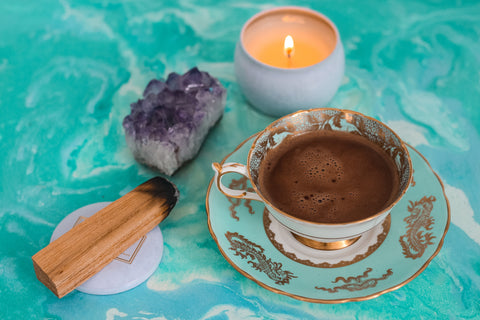
As one of the more expensive oils on the market, sandalwood oil can do wonders for your skin, as it has a lot of beneficial agents that can prevent acne scars.
Mix a couple of drops of sandalwood oil with water and apply it to your acne scars. Leave it for 15 minutes, and then wash your face. The sandalwood oil will also provide a cooling effect, leaving your face fresh and scar-free after a few weeks of using this mixture.
Honey and Lemon
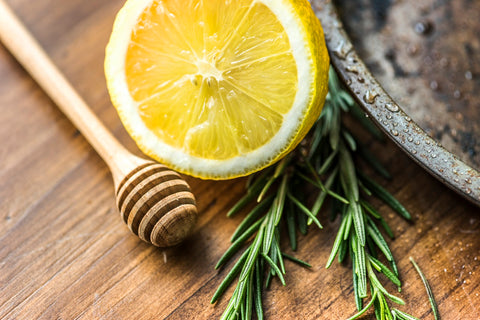
A well-known fact is that lemon and honey mixed together can provide a lot of benefits for our skin. Mix these two ingredients with yogurt and apply them to your acne scars. Leave it on your face for 10 minutes, then wash it off with lukewarm water.
Honey and Orange Peel
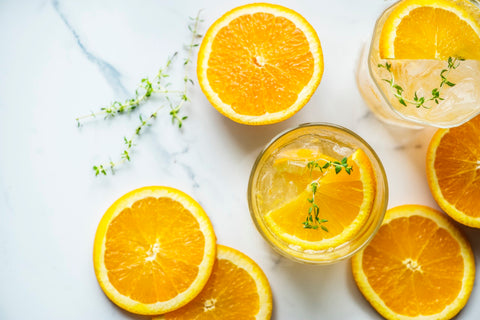
Orange peel contains collagen and retinol that can help with acne scars. Before making the paste, peel an orange and dry the peel. After your peel is dried, grind it into a powder and mix it with 1 tsp of honey. After forming a paste, apply it on your face and leave it for 30 minutes, then wash it off. Do this every other day, and the results will be visible in a few weeks.
Natural Home Remedies to Get Rid of Dark Circles
Coconut Oil
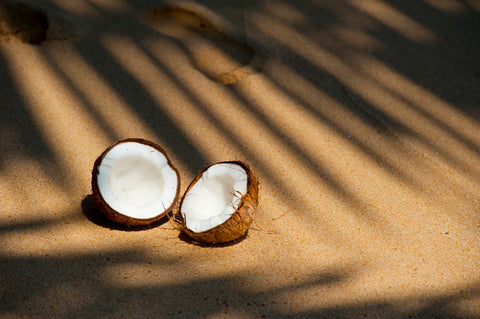
If you're struggling with dark circles under your eyes, adding coconut to your skincare routine can do a lot for this type of problem. Coconut oil has made a huge comeback these years because of its amazing health effects, especially regarding skin and hair. It's a good anti-oxidant that reduces inflammation and improves overall circulation.
Coconut oil has been known to improve the appearance of dark circles under the eyes, which we get as we grow older and our skin becomes thinner, which makes the vessels beneath our eyes even more visible.
It's also important to mention that virgin oil is the best kind, as this type of oil has not been altered with chemicals that come with processing.
Before using it in the desired area, ensure your face is freshly cleaned. Then apply the oil with your fingers and massage it with circular movements. After massaging it for 2 minutes, leave the oil on your face until the morning. The next day, wash your face as you would normally. Repeat this remedy for a few weeks to see some excellent results.
Coconut Oil + Almond Oil

For a better effect, mix almond oil with coconut. Why? Almond oil can brighten skin tone, and its texture is easily absorbed into the skin.
Almond oil is filled with healthy fats that moisturize the skin, making it good for dark circles under the eyes. The affected area with these under-the-eye bags is even drier than usual, indicating it needs moisturizing.
Even though almond oil has its benefits as a standalone, we recommend using it with coconut for this specific problem. It's best to use this remedy before bed so that the mixture can soak into your face.
Mix a couple of drops of coconut and almond oil in a small bowl. Apply this mixture to your dark circles, and massage it with circular movements. Make sure to leave it overnight. Wash your face in the morning and repeat every night for a few weeks until you see some results. If there's no change at all, consult your doctor. Sometimes darker circles under the eyes may be an indication of health issues, such as problems with the liver.
Tomato Paste
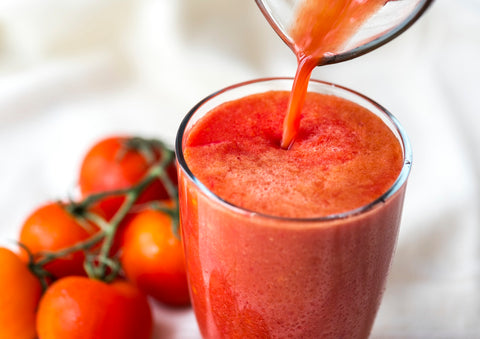
If you're not a fan of leaving your face oily overnight, another natural way of reducing dark circles is tomato paste. Tomatoes have natural benefits for the skin and many antioxidants that help with discoloration. This paste is easy to make, as you only need one tomato, one lemon, and flour.
Mix the juice from the tomato and lemon with 2 tbsp of flour (or more, depending on your juice extraction). Apply your paste to a clean face under the eyes and leave it for 20 minutes. After that, rinse off with cool water. Repeat this a few times every week for better results.
You can make another paste for dark circles with tomatoes and potatoes. Blend these two ingredients and gently massage under your eyes, Be careful, as this area of the skin is very sensitive.
Herbal Tea Bags
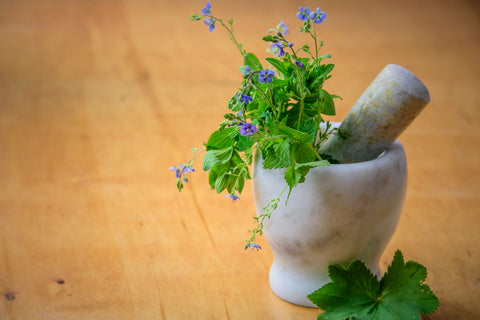
If you're not in the mood to make a paste but want to keep your skin healthy, you can always try the good old-fashioned way! Put a herbal or green tea bag over your eyes for a few minutes. Just make sure it's cooled down a bit first!
Depending on how you got your eye circles in the first place, getting more sleep and drinking your water can benefit your skin and make your dark circles disappear.
Best Home Remedies for Skin Rashes
Baking Soda

We're sure this isn't the first time you're hearing about this famous household remedy. Baking soda works by putting the skin's pH into balance and reducing inflammation, and people have used baking soda to treat skin-related problems for decades.
For the best results, pour two cups of baking soda into a warm bath, and soak for at least 20-30 minutes. Rinse off your body with lukewarm water.
Oatmeal Bath

Did you know that in 2003 the U.S. Food and Drug Administration (FDA) approved colloidal oatmeal as a skin protectant? Yes, it's that powerful. Dissolving colloidal oatmeal in a bath can help you with your skin rash.
Fill your bathtub with water, grind a cup of colloidal oatmeal, and pour it into the water. Stay in the bath for at least 30 minutes. An oatmeal bath can be a very effective remedy since oats contain anti-inflammatory agents such as linoleic oil and oleic acid. These substances reduce the body's level of cytokines — proteins secreted by cells that can cause inflammation.
Cold Compress
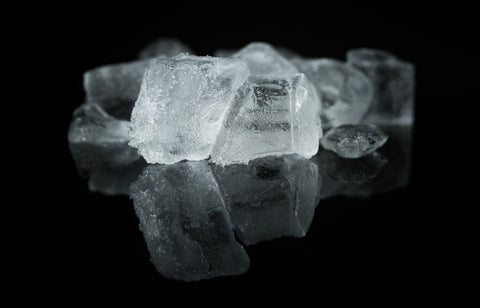
A cold compress practically holds sealed ice cubes or a soaked towel in ice water over the affected area. Hold the cold compress for five to ten minutes. It has the power to reduce swelling, inflammation, and itching. Especially if heat, insect bites, poison ivy, or shingles have caused the symptoms.
Plant Oils Such as Chamomile Oil

Chamomile is famous as a relaxing herbal tea. When used topically, it produces anti-inflammatory or antihistamine effects, which soothe and calm the skin.
Other amazing plant oils with soothing effects are olive oil, safflower seed oil, argan oil, and jojoba oil.
Neem
Boil some neem leaves, filter the solution, and leave it to cool down. Dip a cotton ball in the liquid and apply it over the affected area for at least 10 minutes. You should feel relief and a soothing sensation. This comes because of the anti-inflammatory, analgesic, anti-irritant, and antibacterial properties of the neem, which makes it an incredible remedy for many skin conditions.
Natural Home Remedies to Get Rid of Wrinkles

As we get older, we all get wrinkles on our faces. This is because our skin becomes drier and less elastic with age, and that's when wrinkles appear.
Changing our habits is not good just for our overall health, but changing our diet and adding more exercise to our daily lives can help us slow down the aging of our skin.
We can also reduce the wrinkles on our faces with a few home remedies, which through the years, have been shown to provide effective results.
Lemon
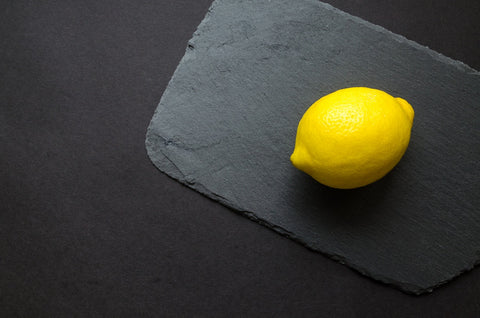
Vitamin C is the best way to treat wrinkles naturally. Even just slicing a lemon and gently massaging it into your wrinkles can reduce them. But don't use this remedy too often because the acidity in lemon can be bad for your skin.
Banana and Lemon Paste

To make a lemon-based paste, we recommend combining it with a banana. Mix the banana with the lemon juice and use it as a face mask. Leave it for 20 minutes, and then wash your face. The potassium from the banana will help hydrate your skin, and the vitamin E will fight the damage that the skin gets from the sun, which causes wrinkles.
Avocado

Avocados contain natural oils that revitalize the skin. Also, avocado is a magical fruit with many vitamins that can help regenerate the skin and make it appear more youthful. Just blend the avocado into a paste and apply it on your face. Leave this revitalizing mask on for 15 minutes to reduce wrinkles.
Carrots

This vegetable has a lot of vitamin A, which helps with collagen production and makes our skin more elastic. Simply boil and blend a few carrots to make a paste. Leave this homemade mask on your face for 30 minutes, then rinse it with cold water.
Cabbage
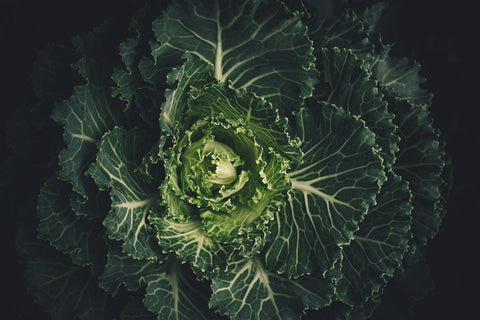
Cabbage may not have the best smell, but women used this ancient remedy back in the day to reduce their wrinkles. Why? Because cabbage contains all of the vitamins from the above-mentioned fruits and vegetables. It's rich in vitamin A, vitamin C, vitamin K, and vitamin D. It has potassium, calcium, and magnesium. These vitamins keep the skin youthful, reduce wrinkles and delay the formation of new ones.
It also contains 'indole-3-carbonyl', an antioxidant that can remove toxins from your skin. All you need to do is steam and compress a few cabbage leaves. Wait until it has a lukewarm temperature, and place the compressed leaves on your face.
Tap with cotton every few minutes so your skin can take in all the juice from the steamed cabbage. Do this for 40 minutes, then wash your face with clean water.
Natural Home Remedies to Get Rid of Discoloration, and Dark Spots
Red Onion
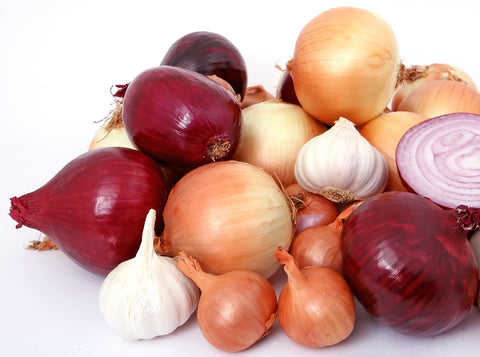
Evidence shows that the dried skin of red onions is a powerful tool for lightening your skin tone. Because applying red onion directly to the skin can cause irritation, the safest option is to search for skin-care products containing Allium cepa (red onion).
Black Tea Water
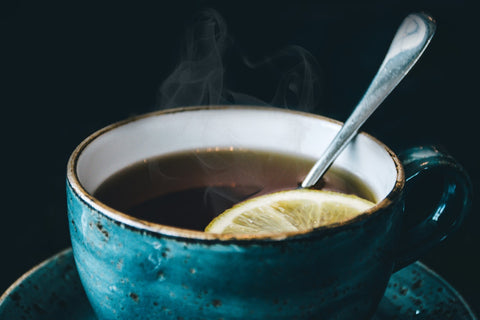
Next time you make black tea (with fresh black tea leaves), make one extra cup and leave it for approximately two hours to cool down. After this, remove the leaves, dip a cotton ball in the liquid, and apply it to the affected areas. You can repeat the procedure twice a day.
In experimental studies with animals, black tea water has proven effective in lightening dark patches and spots.
Licorice Extract

Licorice extract comes from the licorice root, most commonly used as a sweetener in candies and beverages. But people have been using it for a long time for its antibacterial properties. There is evidence that topical gels containing licorice extract can help even out the skin tone and reduce the appearance of dark spots.
Orchid Extract
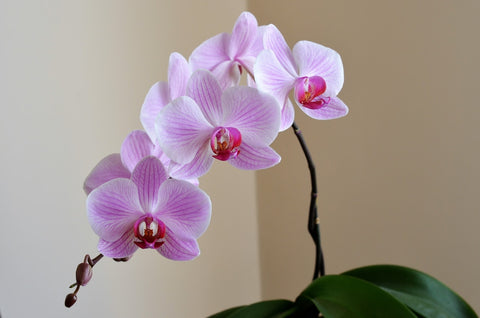
Orchids are typically used for their reparative and protective properties, moisturizing, reducing the appearance of fine lines, and fading dark patches and spots. A couple of studies have shown that orchids are effective hyperpigmentation remedies, which is why you can find this natural moisturizer in so many skin products.
Strawberry Mask
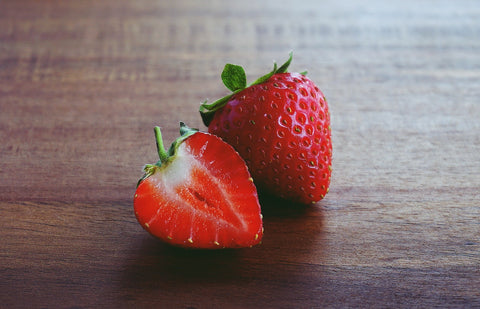
Strawberries are naturally rich in salicylic acid, a powerful cleansing agent. Because of this, they can be very effective in eliminating dark spots. You’ll need a handful of strawberries and one tbsp of plain yogurt.
Combine the ingredients and mash them together until you get a soft paste. Apply the mixture evenly on the face and leave it to act for 30 minutes. Rinse off with cold water.
Natural Home Remedies to Get Rid of Stretch Marks
Argan Oil
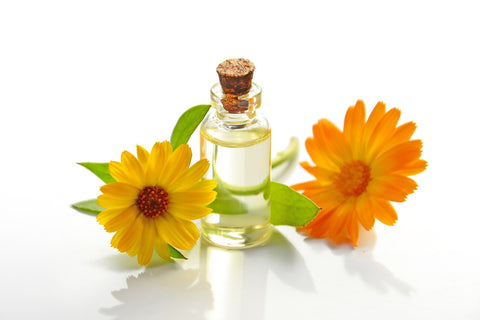
Being rich in vitamin E, argan oil increases skin elasticity, which is why it's recommended for treating stretch marks. Rubbing it regularly on the skin may help the broken tissue heal and gradually fade stretch marks.
Lemon Juice
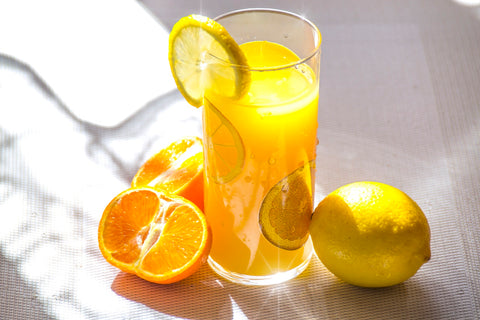
Lemon juice is a great natural remedy for red stretch marks because of its bleaching properties. Just slice a lemon and gently rub it on the affected area. Be patient and persistent. You can do this daily for the best results.
Cocoa Butter

Cocoa Butter penetrates deep into the skin's layers and refreshes and rebuilds damaged cells. This ingredient will hydrate your skin and, over time, can effectively reduce or even completely eliminate stretch marks.
The simplest way to use it is by directly massaging the skin with cocoa butter twice a day. If you are consistent, you'll see results after a couple of months. Another way to use cocoa butter is by mixing it with beeswax, vitamin E oil, and apricot oil - one tbsp each. After you blend it well, heat the mixture until the beeswax melts. Store the paste in your refrigerator. When you want to use it, simply apply it on the stretch marks and gently massage it for a few minutes.
Shea Butter

Shea Butter is a powerful antioxidant that also holds anti-inflammatory properties. It will moisturize your skin, repair damaged skin cells, and keep it healthy. The best thing is it's so good that you can use it many times during the day. Your skin will benefit, and the stretch marks will stand no chance!
Aloe Vera
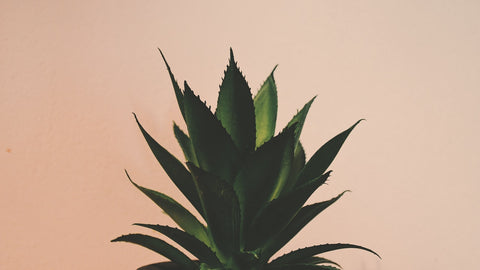
Aside from being an amazing super-ingredient, the glucomannan and gibberellin in aloe vera increase collagen synthesis, speeding up the tissue's healing process and making for radiant skin. It will soothe the skin and fade stretch marks in no time. Aloe vera is really powerful - you can rub fresh aloe vera gel directly on your stretch marks. Leave it for 15 minutes, then wash it off with room-temperature water.
Apricot Mask

Take 2-3 apricots, remove the seeds, and grind them until you get a smooth paste. Apply this mask directly on affected areas, and leave it to act for 15-20 minutes. Use lukewarm water to wash it off. After a month of daily use, you should see results.
The exfoliating properties of apricots make them a powerful weapon against stretch marks. Additionally, you can use pure apricot oil, which has skin-renewing properties and helps reduce stretch marks as well.
Final Thoughts
Getting clear and healthy skin doesn't have to be a headache. If you're sick of chemicals and toxins, our home remedies for clear skin will help you achieve the complexion you've been dreaming of. From lemon juice to tea and aloe vera gel, there's a reason why these natural ingredients are staples of the skincare industry.
Remember - always do a patch test before using the above ingredients on your face.
References
The potential use of Echinacea in acne
Zinc Therapy in Dermatology: A Review
Jojoba Oil: An Updated Comprehensive Review on Chemistry, Pharmaceutical Uses, and Toxicity
Anti-Inflammatory and Skin Barrier Repair Effects of Topical Application of Some Plant Oils
The Wonderful Activities of the Genus Mentha: Not Only Antioxidant Properties








